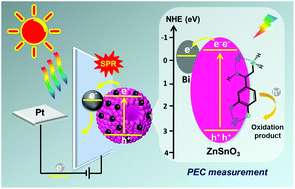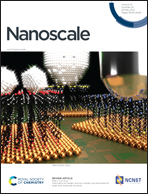Construction of 3D Bi/ZnSnO3 hollow microspheres for label-free highly selective photoelectrochemical recognition of norepinephrine†
Abstract
Herein, we reported a label-free and reliable photoelectrochemical (PEC) platform for highly selective monitoring of norepinephrine (NE) based on metallic Bi nanoparticles anchored on hollow porous ZnSnO3 microspheres (3D Bi/ZnSnO3) via a simple solvothermal strategy. The designed 3D Bi/ZnSnO3 Schottky junction exhibited a unique photoanodic response toward NE among other catechol derivatives, such as epinephrine (EP) and dopamine (DA), and effectively shielded the interference from thirteen coexisting biomolecules like uric acid (UA) and ascorbic acid (AA). High selectivity and excellent sensitivity could be correlated to the unique chelating coordination interaction between NE and Zn2+ at surface sites as well as the efficient carrier separation of Bi/ZnSnO3, thereby developing a novel “signal-on” label-free and selective strategy for NE detection. The proposed Bi/ZnSnO3-based PEC sensor achieved remarkable NE biosensing with a low detection limit of 0.68 nmol L−1 and a wide response ranging from 0.002 to 350.0 μmol L−1. The applicability of this biosensor was realized for the selective analysis of NE in human serum, human urine and injection samples, laying the foundation for the label-free PEC monitoring of NE in biological fluids.



 Please wait while we load your content...
Please wait while we load your content...